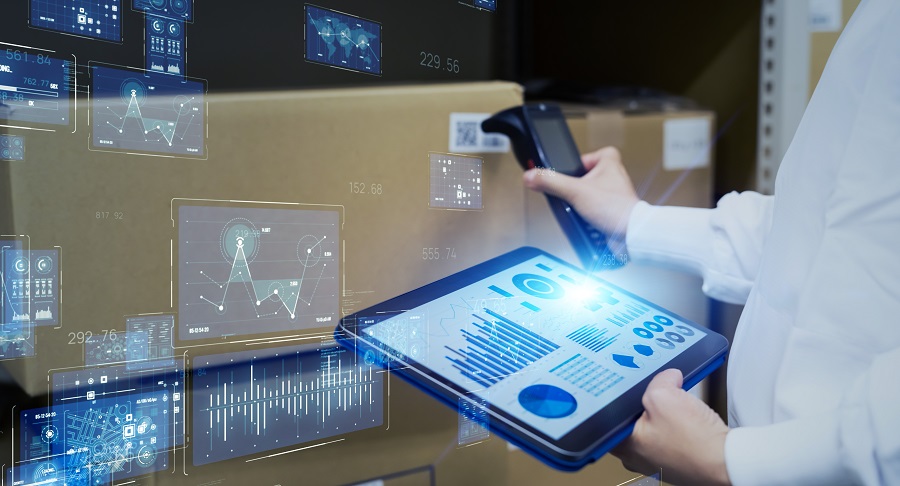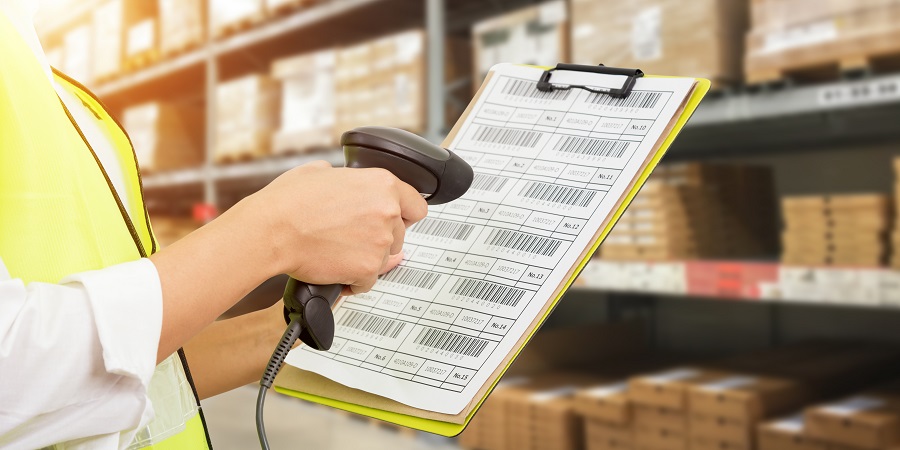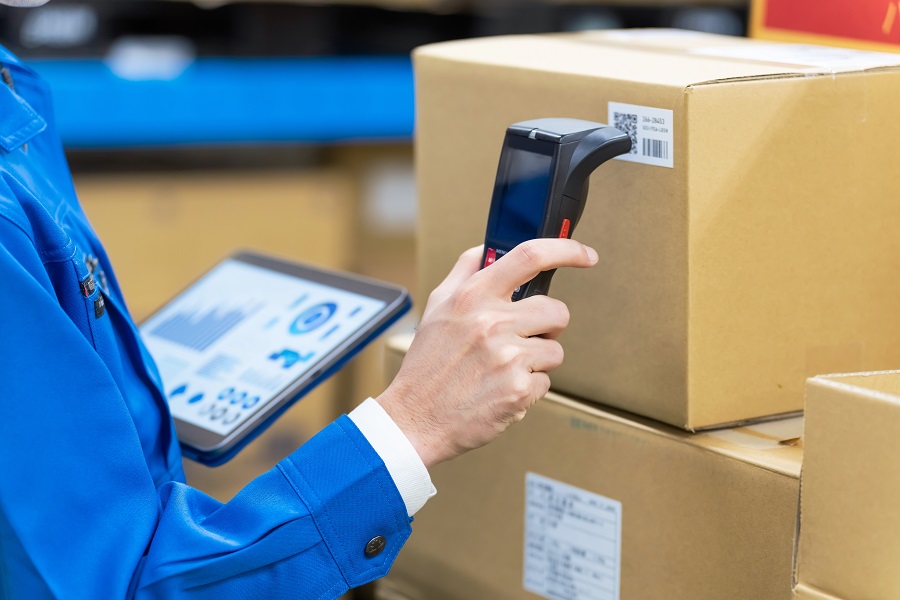12 Feb

Running a small business requires efficiently managing your inventory. Barcode systems provide a simple way to track products and components. But how do you create barcode labels and set up scanning? This guide covers the barcode basics and recommendations for implementing barcode inventory management in a small business.
What Are Barcodes and How Do They Work?
A barcode is a machine-readable image that encodes data. It consists of different widths of black and white lines representing numbers, letters, and other characters. Barcodes are scanned by laser scanners, which decode the pattern into digital information a computer can understand.
When printed on labels or packaging, barcodes allow products to be easily tracked and identified. They connect physical items to digital inventory records. Scanning a barcode provides an instant way to record transactions like sales, orders, and stock counts.
Barcodes used for retail contain a unique identifier assigned by the maker of the barcode. Common barcode formats used in business include UPC (Universal Product Code) and EAN (International Article Number). These standardized systems give each product a number to manage inventory across supply chains.
Key Considerations for Barcode Inventory Systems
When evaluating and selecting a barcode inventory system, small businesses should consider factors like:
Software
What system features do you need to run your operations? e.g. order management, sales tracking, and reporting.
Will you use standalone software or integrate with other platforms like ecommerce or accounting tools?
How many users need access? What training and support is available?
Hardware
Wired or wireless scanners? Do you need mobile devices, handheld or desktop scanners?
Will environmental factors like temperature or dust impact scanner performance?
What is the scanning range and accuracy? How easily can data transfer to your system?
Barcodes
What barcode types and sizes suit your products? 1D (line) or 2D (grid) barcodes have different data capacities.
How many digits do you need to encode product variations and serial numbers?
Do you need pre-printed barcode labels suitable for the product materials you’re labeling?
Also assess ease of setup, scalability options to support business growth, integration with other software, and implementation costs.
Setting Up DIY Barcode Scanning for Inventory

Creating a complete inventory system with a barcode scanner doesn’t require major investment or custom development. Many affordable software options include mobile apps or integration with Excel. For small warehouse or retail operations, you can create a barcode for a product using:
Online Barcode Generator
An online retail barcode generator easily creates standards-compliant barcodes. For retail, UPC barcodes encode a 12-digit number containing:
- 6-digit manufacturer identifier
- 5-digit product code
- Check digit calculated automatically
- Enter your details once to create a catalog of UPCs for your product range.
Barcode Font
Print barcodes easily from any program using barcode fonts. After installing a barcode font, type the 12-digit UPC and print from Word, Excel, etc. Format as font size 18pt for scannability.
Online Label Printing Service
Send your barcode numbers to an instant label printing service. Provide product details like description, image, dimensions, etc. The company prints and ships ready-made barcode labels ideal for your particular products.
Barcode Scanning Software
Use barcode scanner inventory software to scan barcodes and manage inventory. Entry-level options connect barcode data to Excel reports. Higher functions may include:
- Stock management with reorder points
- Warehouse workflow like receiving, putaway, and picking
- Data integration with ecommerce platforms
- Custom reporting
Mobile apps allow barcode scanning using a smartphone camera. This suits on-the-go stocktakes for retail stores or small warehouse operations.
Barcode Scanner Hardware
Choose cabled or wireless 1D or 2D scanners matched to your barcode labels, environment, and mobility needs. USB makes connecting to a computer easy while batch mode supports offline scanning.
How Small Retailers Can Apply Barcodes for Inventory Management
For small retail stores, key inventory management processes that barcode scanning streamlines include:
Goods receipt – scan incoming deliveries to record quantity received and verify accuracy
Price labeling – print shelf labels encoding product identity, description, and price
Stocktakes – use handheld scanners to count store inventory rapidly
Point-of-sale – lookup product details and confirm prices during checkout
Product replenishment – use sales or stock data to generate purchase orders
For shops with hundreds of routinely changing SKUs, barcodes bring order to chaos. They eliminate time-consuming manual entry and mistakes in reading messy handwriting. Instead of employees shuffling papers or counting all day, barcode scanning completes mundane inventory tasks rapidly. Workers can provide better customer service.
The Benefits of Barcode Inventory Management Systems
Barcode-based inventory management system delivers quantifiable business advantages:
Real-time visibility – scan barcodes to check and update item availability across all locations instantly
Efficiency – rapid data collection reduces process times for receiving, putaway, cycle counts, and order picking
Accuracy – remove human error by eliminating manual data entry
Reporting – generate inventory reports and analytics at the push of a button
Omnichannel integration – seamlessly connect in-store, warehouse, and online inventory
While every small business is unique, most retailers and warehouses realize a barcode system for inventory management pays for itself within months. The cost savings compound over time through:
- Less wasted labor counting, searching, and shuffling papers
- Fewer stockouts and write-offs by better tracking items
- Less overstocking due to lack of visibility
- Higher customer satisfaction through stock accuracy
Well-designed barcode scanning processes enhance business resilience. Owners gain the flexibility to scale production, expand to new sites, fulfill more ecommerce demand, and adapt to challenges.
Options for Professional Inventory Management Using Barcodes
For small firms lacking specialized IT expertise, outsourcing inventory management delivers advantages. Cloud-based services provide:
- Consultation to optimize inventory processes and barcode setup
- Project implementation to specify equipment, create barcodes, integrate software, apply labels, and train staff
- Technical support for smooth ongoing operation as business needs change
Consider a full-service stock management partner to create and operate your barcode inventory system. This gains best practice processes tailored to your niche without developing costly in-house capability. Benefits include:
- Managed label printing and application
- Centralized barcode number assignment
- Scanner provision and maintenance
- Wireless infrastructure
- Seamless connections to online sales channels
- Custom reporting on a web dashboard
- Data analytics using machine learning
- Business Intelligence Revealing Sales Trends
Offload barcode infrastructure to an expert partner for simplicity and cost-efficiency across inventory and logistics.
Start Tracking Your Small Business Inventory With Barcodes

As this overview covered, barcodes provide an affordable way for small retailers and warehouses to gain inventory efficiency. Both DIY setups using Excel and mobile apps as well as outsourced professional stock management services allow benefiting from barcode-based inventory management.
Key steps to establish your barcode system for inventory management include:
- Evaluate your current processes and requirements
- Select suitable barcode label formats matched to products
- Assign standardized product identifiers
- Print labels to apply to items, shelves, etc
- Choose the appropriate barcode scanner hardware
- Implement software for data collection
- Integrate with other platforms like accounting, ecommerce
- Use captured data to improve purchasing, production planning, and sales
Done right at a reasonable cost, small businesses can leverage barcode tracking to punch above their weight. Accurate real-time stock visibility and intelligence help independent stores and warehouses delight customers and outcompete larger rivals.
For retail stores looking for an integrated barcode-based point-of-sale system, consider Hana Retail. Hana Retail POS seamlessly combines inventory management, customer loyalty programs, and sales reporting powered by barcode scanning. Built specifically for small shop owners, Hana accelerates checkout, reduces theft, and increases margins. Sign up FREE now!





